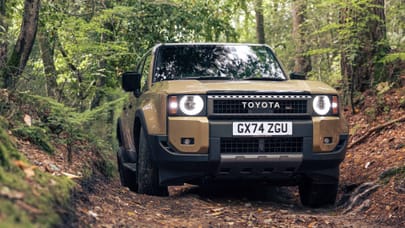
What Americans have done for us
One of Britain's greatest inventions might have been the United States, but USA Inc. has been coming up with ideas of its own to make motoring safer, cheaper or faster, ever since the car was created.
Take the humble traffic light. Originally a British idea cooked up by John Peake Knight, traffic superintendent of the South Eastern Railway, the first set of traffic signals was installed outside the Houses of Parliament in 1868. Borrowing heavily from JP's knowledge of railway technology, they were called street semaphore.
This system used a series of arms and coloured gas lamps, operated by what used to be called a constable, to control the traffic in the surrounding streets. But it didn't last long. After a series of explosions in the gas line supplying the lamps - one of which almost blew the bobby's face off - the experiment was dismantled a month later and the idea forgotten about.
And it stayed that way until electricity became freely available decades later. In 1912, however, the coloured-lights idea reappeared on the other side of the Atlantic when Salt Lake City detective Lester Wire showed what's widely regarded to be the first electric two-colour (red and green) traffic-light system in the world. But Wire didn't patent the system. This gave the green light to James Hoge to christen his own system in Cleveland a year later that used the words Stop and Move instead of the coloured bulbs.
Another couple of US inventors then had a go at improving the system, but it wasn't until 1920 that yet another cop, William Potts, this time in Detroit, invented the first system to use red, amber and green lights. The reason Potts added the amber light was more to do with manpower issues than traffic control.
With just red and green lights, a policeman had to change the signal manually and slow the traffic in each direction - or the traffic would just pile into each other. With the amber light, all directions knew to start slowing as the lights were about to change. This unpatented innovation wasn't solely Potts's idea. He admitted that he had borrowed the three-colour system from the US railways, which had been using the palette for years. But it had taken a while for the railroad folk to find a colour combination that worked reliably. Initially they had used red for stop and white for go. But this proved both unreliable and often lethal.
Sometimes the red filter gel would fall out, turning the light white, and, at other times, street lights, reflections and even bright stars were cited on people's accident forms as being causes for seeing white when there should have been red. The addition of the amber light solved that issue. So all Potts really did was bring the same system to the roads.
With the light order sorted, other inventors then set about automating the control of sets of lights at several junctions, the first recorded instance taking place in Houston, Texas, in 1922. But, despite spreading rapidly across the US, it wasn't until 1927 that the first-ever experimental (and recognisably modern) traffic lights appeared in the UK, in Wolverhampton. Knowing the usual rate of UK road-furniture renewal, they are probably still there now.
Fast-forward a few decades, and - as many lives as traffic lights have saved, and curses they have received - we've now got all kinds of hybrid traffic lights (and laws to go with them). Way more than you'll see in a trip across the whole of the US. Yet there's one innovation they have that still hasn't made it back to the UK: being allowed to turn right even when the traffic light is red.
Apart from saving everyone's time, it also helps traffic flow, so it should be adapted - to left on red - and adopted as soon as possible. We gave them the lights, so surely it's only fair that we borrow their law.
This article was originally published in the June 2013 issue of Top Gear magazine
Top Gear
Newsletter
Thank you for subscribing to our newsletter. Look out for your regular round-up of news, reviews and offers in your inbox.
Get all the latest news, reviews and exclusives, direct to your inbox.
Trending this week
- Car Review
BMW 1 Series








